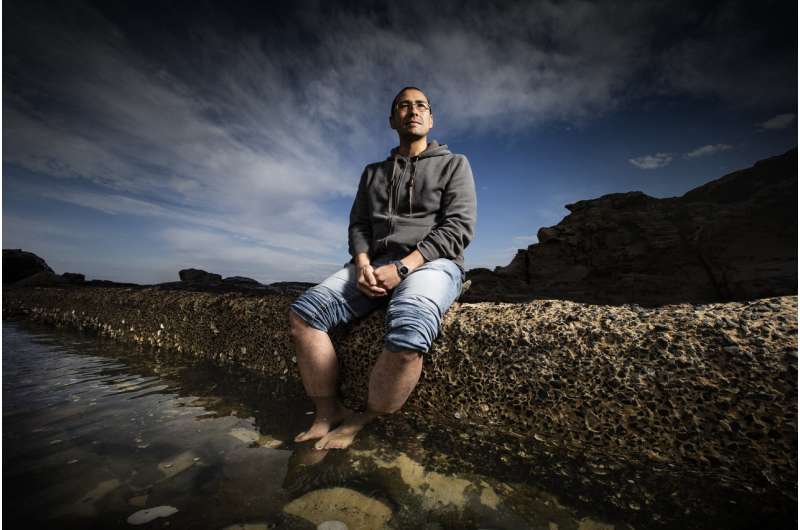Coral bleaching not the only threat to reef fish

Climate change poses a number of threats to the long-term viability of the Great Barrier Reef and the species that live on it. While the damage caused by more frequent coral bleaching is well documented, the impact of more intense tropical cyclones is less well studied due to their short duration and unpredictability.
As with coral bleaching, climate change models predict that high intensity tropical cyclones will occur more frequently as the planet warms.
In a paper published in the journal PLOS ONE on 5 September, researchers from the University of Wollongong (UOW) studied the effect of two successive category 4 cyclones – Cyclone Ita in April 2014 and Cyclone Nathan in March 2015 – on the social structure of coral reef fish at Lizard Island.
The study's lead author, Mr Martin Hing from UOW's Centre for Sustainable Ecosystem Solutions in the School of Biological Sciences, said cyclones can devastate both the physical structure of coral reefs and the abundance and distribution of the animals that rely on them for food and shelter.
However, scientists know relatively little about how cyclones affect the social structures of species that live on the reef, or how different social strategies affect a species' ability to cope with disturbance.
"For social species, social organisation is a key factor in terms of things like their foraging efficiency and how well that particular species reproduces – things that feed into their ultimate survival," Mr Hing said.
"If that's interrupted, if their social structure is changed, then maybe their feeding efficiency goes down and they have lower survival rates."
The researchers sampled group sizes and coral sizes of five group-forming species and eight pair-forming species of Gobiodon fish (aka coral gobies) before and after cyclones Ita and Nathan.
Group sizes of group-forming species decreased after each cyclone, but showed signs of recovery four months after the first cyclone (Ita). A similar increase in group sizes was not evident in group-forming species after the second cyclone (Nathan). On the other hand, there was no change in mean pair-forming group size after either cyclone.
"We found the group-forming species did decrease in their group sizes after each cyclone while the pair-forming species didn't increase or decrease in their average group sizes at all," Mr Hing said.
"In between the two cyclones, the group-forming species actually recovered a little and started moving back to larger group sizes. This was quite unexpected as the average size of corals was much smaller and we expected that smaller corals would generally not support larger groups of fish.
"Then when the second cyclone came through, they decreased again in group size."
"We sampled about 10 months after the second cyclone and their group sizes were still really low. After an isolated incident, the population could probably bounce back, but it looks like multiple impacts may have longer lasting effects on them.
"As the frequency of more intense cyclones is likely to increase in the near future, this could lead to population declines and even localised extinctions of the group-forming coral gobies."
One of the reasons why the impact of repeated tropical cyclone events on the reef's inhabitants is less well known is the difficulty of knowing when and where cyclones will hit. For this study, the UOW team just happened to be at Lizard Island before and after both cyclones.
"This study was highly opportunistic and probably unique. We were trying to run a longer term study looking at sociality in these fish but the cyclones had different plans for us," Mr Hing said.
"Essentially, we started an experiment and then the cyclone came through and we thought, 'okay, let's go back and see what we can find'.
"On the first trip we tagged about 600 fish and we were going to go back and see if those same individuals were still in their original corals or whether they moved to other corals around the place. After the cyclone, we only found 11 of the 600 fish we tagged, so that was quite devastating."
"However, we salvaged the data we'd been collecting and were able to compare before and after the cyclones. That happened two years in a row.
"We were actually in Cairns airport when the second cyclone came through. We had a trip to Lizard Island planned but got turned around."
More information: Martin L. Hing et al. Repeated cyclone events reveal potential causes of sociality in coral-dwelling Gobiodon fishes, PLOS ONE (2018). DOI: 10.1371/journal.pone.0202407
Journal information: PLoS ONE
Provided by University of Wollongong


















